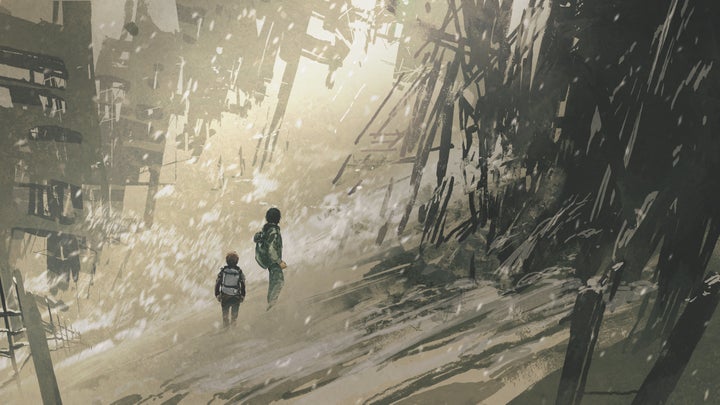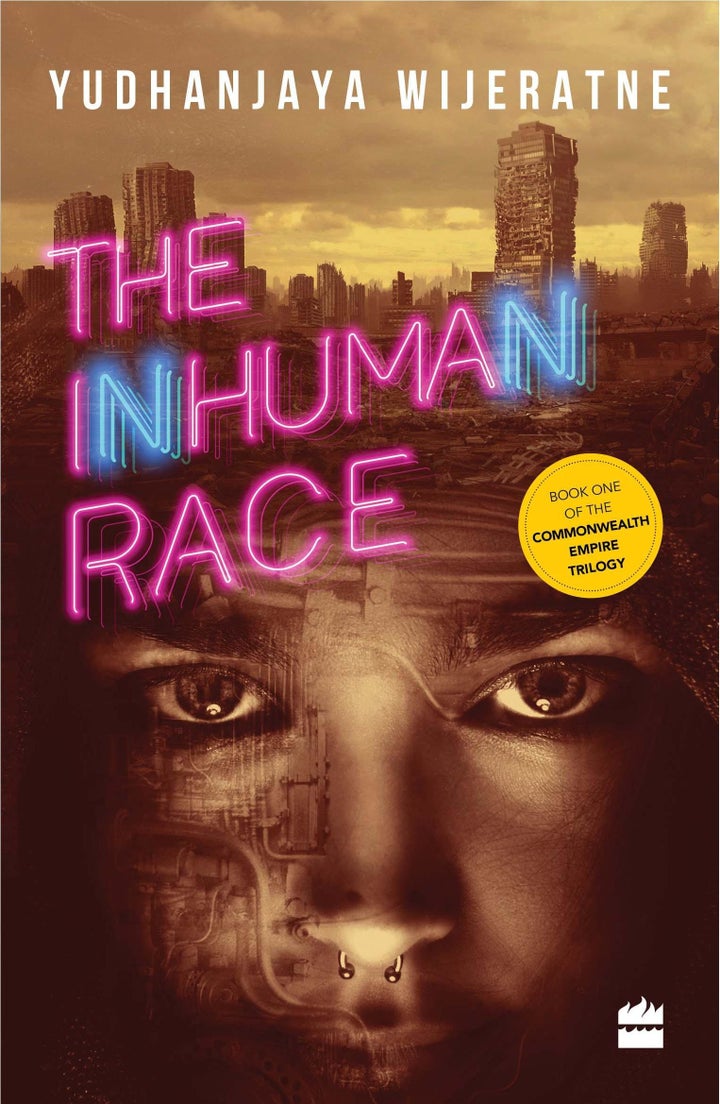
In the midst of the ruins of “shell-blasted hotels whose spires reach out into the dark night sky”, a robotic voice with a Chinese accent declares that the Bluetooth device is ready to pair. With this absurd bit of information The Inhuman Race, set in British Ceylon (now Sri Lanka) in the year 2033, pulls us into its murky depths immediately.
The Silent Girl, the protagonist of this dystopian sci-fi novel by Sri Lankan writer Yudhanjaya Wijeratne, is mystifying. Fiercely self-sufficient, she uses her radio to communicate and a handmade spear to protect herself as she walks through the ruins of Colombo. When the lost and lonely boy Pissa latches on to her for friendship, she is resistant at first but she gives in eventually. She thinks she is protecting him and he thinks he is protecting her. The unlikely pair are one among hordes of children who are alike—fierce, ready for battle.
It’s only when the children climb the huge mountain of garbage and reach the other side that the truth is revealed to them, albeit accidentally. They are all being trained for the ‘ultimate battle’. To kill each other for sport. When the children get on a train that takes them away from their imminent death, we’re cheering for them silently as we read.
There are quite a few confusing time jumps in the story. The first takes us to Dr Almeida’s laboratory in Kandy (in central Sri Lanka), where she battles with her conscience over the fate of these children. The intention is to shock the reader. The story jumps more timelines and by the time we see The Silent Girl again, much time has passed.
The next time we see Dr Almeida, after yet another jarring jump, she is in her fifties, fighting a court case where the rights of the ‘Inhuman Race’ is being argued.
These time jumps leave the reader confused and make it difficult for them to identify the characters they want to root for. We only read about ‘livestream online’ and similar expressions, which let us know that the killing is broadcast to a world at large. Who are the people who watch the children kill each other for their enjoyment? The details are scarce.
Dr Almeida is fighting to stop the children from being killed. Her lawyer, Eraj Ekanayake, takes up the case half-heartedly, but finds himself drawn into the case even though he thinks she’s a “certified crackpot”.
In a world proliferated with artificial intelligence and bots, Wijeratne makes a strong case for sentience among these children. Humanity is at play, but the important question one gleans from the book is: who is human and who is not, and who gets to decide?

There is much information packed in this slim volume, which is the first of the Commonwealth Empire Trilogy. However, the gripping, action-packed first half segues into the second half rather jerkily (again!) and the events just keep jumping forward in time without furnishing enough details to keep the reader hooked. After investing in the character of The Silent Girl, readers are suddenly left without her in the second half. It takes a little bit of convincing to shift loyalties to Dr Almeida but once again, events change everything. After the lull of the second part, the book races towards a finish that leaves the reader wanting to know more, especially the events that take place between the last chapter and the epilogue.
Wijeratne has emerged as a strong voice in south Asian science fiction, considering that his earlier book Number Caste won the 2017 Virtual Fantasticon Award. Number Caste takes further the concept in the Black Mirror episode Nosedive and China’s social credit system, leading to a world where everyone has to depend on the number they were assigned. But The Inhuman Race is a far better book.
The similarity between the books is that they’re set in futuristic dystopia. Number Caste is far more frightening because it’s an impending reality in our lives. The Inhuman Race, however, is set in a fictional world where the British Empire never fell and the Commonwealth Flag still flies over the colonies. More details about this world, its functions and what life is like for the commoner would have served the reader well. Because try as you may, the image of the manufactured ruins of Colombo where The Silent Girl and the Pissa wander among the wreckage—hand in hand, trying to survive—is what remains with the reader.